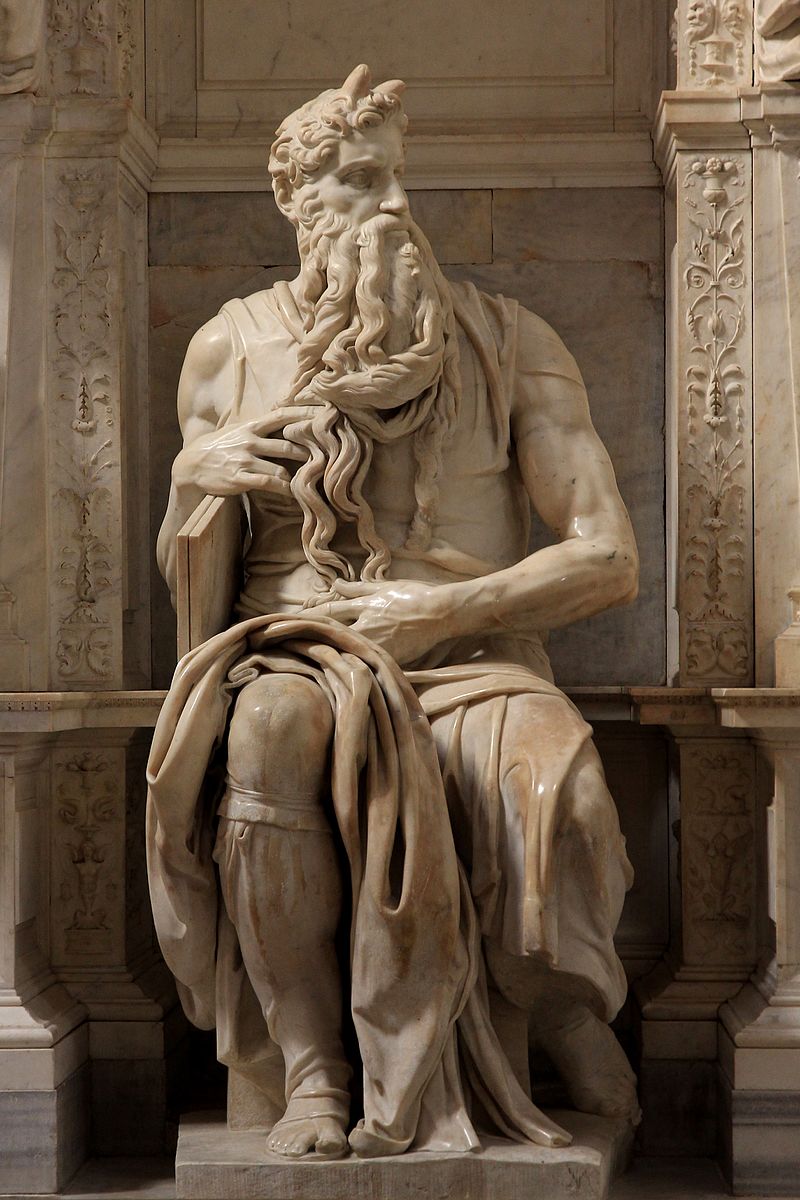 You may be aware of Michelangelo’s statue of Moses that can be found in the Basilica of St Peter in Chains on the Oppian Hill in Rome. As you look closely at the statue, or in this case the image of the statue, you will see that Moses has horns coming out of his head. This statue, and other similar images of Moses, are often referred to as: Moses with horns. The origin of this particular image of Moses comes from today’s First Reading (Ex 34:29-35).
You may be aware of Michelangelo’s statue of Moses that can be found in the Basilica of St Peter in Chains on the Oppian Hill in Rome. As you look closely at the statue, or in this case the image of the statue, you will see that Moses has horns coming out of his head. This statue, and other similar images of Moses, are often referred to as: Moses with horns. The origin of this particular image of Moses comes from today’s First Reading (Ex 34:29-35).
When St Jerome was translating from the Hebrew into the Latin he took the Hebrew word qāran to me ‘horns’. This was not in itself unusual, as the root-word qāran comes from the word qeren which often, but not always, means ‘horns’. Current biblical scholarship would suggest that a better translation is that of ‘radiant’ or ‘glorified’. We need not spill any further ink here on which of these terms is best, instead we can simply move with the language of the Lectionary: ‘his face was radiant’.
Our First Reading comes from towards the end of Book of Exodus - in fact, we have only chapters 35 to 40 remaining – and it is here that we find a change in the countenance of Moses. The man we first meet as a baby placed in the river (Ex 2:1), who encounters the Divine on Horeb (Ex 3:1-22), who leads the Hebrews out of Egypt (Ex 12 – 15), who with the Hebrew People enters into a Covenant with God and receives (for the first time) the Ten Commandments (Ex 19 - 20: 1-17), and now nearing the end of his life, experiences / shows this radiance in/coming from his face. What is it that has caused this change? It is nothing short of the impact / influence / result of Moses’ continued intimate contact with the Divine. It has, over time, transformed the man.
Our Responsorial Psalm gives us some further insight into the First Reading: ‘Holy is the Lord our God’…’Extol the Lord, our God, and worship at his holy mountain; for holy is the Lord, our God.’[1] It is the absolutely ‘otherness of God’, his ‘holiness’, that has transformed the face of Moses. While God certainly drew near to people of Israel, and did so most fully and uniquely in the person of Jesus, alerting us to the closeness of our God, our First Reading today reminds us not to reduce this closeness simply imagining God as our mate.
It is the closeness of Holiest One that transforms the countenance of Moses, and we hope, in time, might do the same in us.
[1] In fact, as the Responsorial Psalm is (funnily enough) our ‘response’ to the First Reading, if ever you are a little lost as to what to make of the First Reading, reflect upon it in light of the Responsorial Psalm.
Image downloaded from 'Moses' by Michelangelo JBU160 - Moses (Michelangelo) - Wikipedia on 22 July, 2021.


